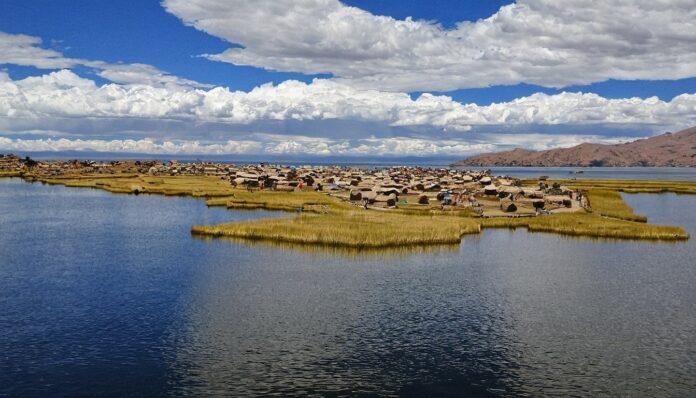Lake Titicaca is one of the most fascinating bodies of water in the world. Located high in the Andes mountains, it spans the border between Peru and Bolivia. This lake is known for its unique characteristics, rich history, and cultural significance.
Lake Titicaca sits at an elevation of about 3,812 meters (12,507 feet) above sea level, making it the highest navigable lake in the world. It is the largest lake in South America by volume and surface area, covering approximately 8,372 square kilometers (3,232 square miles).
Interesting Facts About Lake Titicaca
- Floating Islands: The Uros people have created more than 70 floating islands using totora reeds, which they renew periodically.
- Deep Waters: The maximum depth of Lake Titicaca is about 281 meters (922 feet).
- Climate: Despite its high altitude, the lake has a relatively mild climate, with temperatures moderated by its large volume of water.
- Sunset Views: The sunsets over Lake Titicaca are renowned for their breathtaking beauty.
- Cultural Heritage: The area around the lake is rich in folklore, music, and traditional crafts.
- Inca Ruins: The Isla del Sol (Island of the Sun) and Isla de la Luna (Island of the Moon) are famous for their Inca ruins and mythological significance.
- Natural Beauty: The clear, deep blue waters of Lake Titicaca are framed by stunning mountain scenery.
- Connectivity: The lake is accessible from the cities of Puno in Peru and Copacabana in Bolivia, both of which offer various amenities for travelers.
- Local Cuisine: Visitors can enjoy local dishes, including fresh fish from the lake, such as trout and pejerrey.
- Reed Boats: The traditional reed boats, known as “balsas,” are still used by the local people and are a unique sight on the lake.
- Bird Watching: The lake is a haven for bird watchers, with numerous species of waterfowl and other birds.
- Underwater Ruins: Archaeological expeditions have discovered ruins beneath the lake’s surface, suggesting it was a significant cultural center in ancient times.
- Lake Legends: Local legends speak of hidden treasures and lost cities beneath the lake’s waters.
- Alpaca Wool: The highland communities around the lake are known for their high-quality alpaca wool products.
- Solar Influence: The name “Titicaca” is believed to mean “Rock of the Puma,” and some legends connect it to solar worship by ancient cultures.
- Bilingual Region: Many inhabitants around the lake speak both Spanish and Quechua or Aymara, reflecting the area’s rich cultural heritage.
- Flora: The totora reeds used by the Uros people are also an essential part of the lake’s ecosystem, providing habitat for various species.
- Stargazing: The high altitude and clear skies make Lake Titicaca an excellent spot for stargazing.
